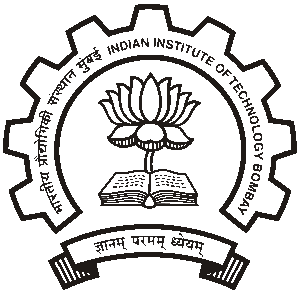Our group works on various aspects of information theory,
communication and signal processing. In particular, the Information
Systems and Radios (ISR) lab provides a broad umbrella for such
activities. The lab houses several software radio peripherals and
contributes to the teaching and research in wireless communication
and signal processing. Feel free to interact with me over email in
case you are already a student at IITB and interested in knowing more.
I am also open to discussing any new idea that you wish to work on the
broad domain of communication/information theory.
Some of the specific stuff:
1) Cellular Information Inheritance in Biology
Information theory and genetics are closely related, at least they
share some common 'genes', with Shannon proposing a theory of cellular
inheritance in his masters thesis (the DNA structure was still unknown then),
before moving to create information theory. While it
is true that our understanding at the cellular level has immensely improved
with the deciphering of the genetic code and large scale analysis of epigenetic
data from different parts of the globe, not much improvements were made to
extend Shannon's original theory on genetics from an information theory
standpoint. Interested students who wish to learn a bit about genetics, its
connection to information and communication are encouraged to discuss.
Something we recently did on this can be found at Click Here . Details:
N. Ramakrishnan, S. R. B. Pillai and R. Padinhateeri:
High fidelity epigenetic inheritance: Information theoretic model predicts ...
PLoS Computational Biology 18(2) (2022)
2) Distributed Compression under State agreement/estimation
State agreement is a relatively new concept, where the transmitter
and receiver needs to agree on an index such that the same reconstruction
of a state process can be achieved at both ends within a distortion constraint.
Multi-user extension of this gives rise to several interesting questions.
3) Noisy Feedback in Networks
While there are both optimistic and pessimistic results on the role of
feedback in enlarging the capacity region of various networks, we do not know
the answers in general. A broadcast channel (BC) with noisy feedback leads to
several interesting questions, particularly so when the receivers are not
degraded with respect to eachother. While the capacity region itself is not known yet,
we set out to answer the question of enlargement in a Gaussian BC. Strict conditions
are derived for the capacity enlargement for this model, whereas the jury is out
somewhere there for many other popular channels.
The techniques needed are are mix of information theory and estimation theory.
Ref: A. N. Ravi, S. R. B. Pillai, V. M. Prabhakaran and M. Wigger,
“On the Capacity Enlargement of
Gaussian Broadcast Channels ...”,
IEEE Transactions on Information Theory, October 2021.
4) Multiple Access with Distributed CSI
Multiple access is a well understood system in information/communication
theory. However, in presence of fading wireless links, several intriguing
scenarios arise. For example, it is reasonable to assume that each transmitter
has access to its link gain, whereas he/she is unaware of the link gains of the
other users. Information theory says that the chosen rate-tuple of all users
should be contained in the so called capacity-region. How does each user
ensure that the global rate-vector is inside the multiple-access capacity
region. We study distributed schemes which ensure this, and at the same
time optimizing the throughput of the system.
Ref: Sreejith Sreekumar, Bikash Kumar Dey, Sibi Raj B. Pillai:
Distributed Rate Adaptation and Power Control in Fading Multiple
Access Channels. IEEE Trans. Information Theory 61(10): 5504-5524 (2015)
5) NAVIC: Constructing a satellite receiver.
India now owns and indigeneous GPS like positioning system,
using a constellation of
7 satellites over the subcontinent. This has opened up interesting avenues
of research and development, in accurate positioning as well as
atmospheric studies (called GNSS reflectometry).
While a basic infrastructure to figure out the
transmitted bits from the satellite is already developed by several
students here, developing a robust real-time receiever is more
challenging. In particular, an RF front end, along with software
radio based decoder is available. Further work is required to develop
the set up to measure atmospheric parameters.
6) LDPC codes for multiuser detection.
7) Algorithms as well as theoretical bounds for compressed sensing
8) Impact of Channel uncertainty in multi-user communications.
|

